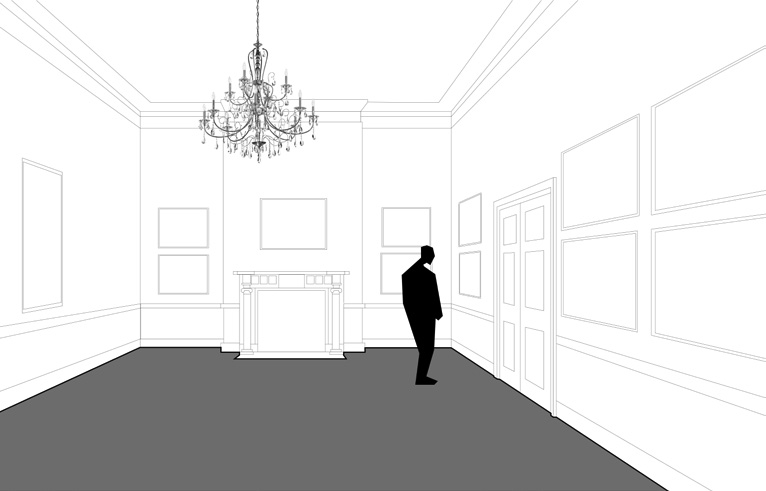Spatial Dimensions of the Hidden School
Downloads
DOI:
https://doi.org/10.51588/eaaeacp.68Keywords:
spatial dimension, walls and spaces, environmental psychology, social phenomenologyAbstract
The spatial dimension of a school transforms an abstraction into a situated phenomenon. In doing so, the context intentionally or implicitly affects education. The potential impact the physical environment and the implied connotations it carries on one’s experience in and of it, is best argued by common sense. In the sense that architecture can be considered as a means to curate scenarios, anticipate and influence behaviour and even create a narrative, architecture is an agent in what composes the hidden school. In the case of educational spaces for architecture, the built environment is particularly influential as it is not only a representation of the idiosyncratic nature and program of an architecture school but also a reflection of its attitude towards the discipline and a statement about its aspirations and culture. Every aspect of an architecture school’s physical presence can be interpreted as a statement about its character and spirit, despite the fact that those analyses may be inconclusive hypotheticals. A school’s location and context can be related to both its self-awareness and its attitude towards the outside world.
How to Cite
Published
Issue
Section
License
Copyright (c) 2020 Rossina Shatarova

This work is licensed under a Creative Commons Attribution 4.0 International License.
References
AA Official Webpage, Retrieved from https://www.aaschool.ac.uk/AASCHOOL/BEDFORDSQUARE/bedford.php
AAP Cornell University webpage, Retrieved from https://aap.cornell.edu/about/campuses-facilities/ithaca/milstein-hall
Aloi, D. (2011, August 29). Architecture students ‘take possession’ of Milstein Hall. Cornell Chronicle Online, Retrieved from http://news.cornell.edu/stories/2011/08/architecture-students-take-possession-milstein.
Boys, J. (2010). Towards Creative Learning Spaces. Re-thinking the Architecture of Post-Compulsory Education. London: Routledge.
Confluence Official Webpage. Retrieved from https://www.confluence.eu/en/campus/
Cook, P. (2012, September 28). Alvin Boyarsky (1928–1990). The Architectural Review Online, Retrieved from https://www.architectural-review.com/essays/reputations/alvin-boyarsky-1928–1990/8636161.article.
Coulson J. & Roberts P. & Taylor E. (2010). University Planning and Architecture: The search for perfection. Routledge.
Daou D. & Huppatz DJ & Phuong Q.P. (2015). The Trace of the Wall. Limitless Boundaries. In Unbounded: On the Interior and Interiority (p. 73). Newcastle: Cambridge Scholars Publishing.
Dullea, H. N. (2002, November 7). Cornell officials and architect end design relationship. Cornell Chronicle Online, Retrieved from https://news.cornell.edu/stories/2002/07/cornell-officials-and-architect-end-design- relationship.
Griffiths, A. (2011, September 16). New OMA Building opens at Cornell University. Dezeen Online, pp. Retrieved from https://www.dezeen.com/2011/09/16/new-oma-building-opens-at-cornell-university/.
Harvard University Graduate School of Design Online Resource Centre. (n.d.). Retrieved from https://www.gsd.harvard.edu/resources/
Heilmeyer, F. (2016). No more masters, interview with Odile Decq. Uncube Magazine (26)
Helfand, D. (2013, June 9). Designing a university for the new millennium. TEDx talk. Retrieved from https://www.youtube.com/watch?v=DZQe73IXZtU
Hill, J. (2003). Actions of Architecture. Architects and Creative Users. New York and London: Routledge.
Kahn, L. (1961). Form and Design. Architectural Design (31), 148.
Lefebvre, H. (1992). The Production of Space. Oxford: Blackwell.
Massey, D. (2005). For Space. London: SAGE Publications.
McManus, J. (2018, 06 16). 15 Inspiring Architecture School Buildings from Around the World. Archdaily Online, pp. Retrieved from https://www.archdaily.com/896016/15-inspiring-architecture-school-buildings-from-around-the-world.
Melvin, J. (2012, October 5). Wright & Wright’s AA revamp revealed. The Architects’ Journal Online, pp. Retrieved from https://www.architectsjournal.co.uk/home/wright-and-wrights-aa-revamp-revealed/8636806.article.
Monchaux, T. d. (2011, November 11). Back to School. Architect Magazine Online. Retrieved from https://www.architectmagazine.com/design/back-to-school_o.
Pallasmaa, R. M. (2012). Understanding Architecture. London: Phaidon Press.
Preiser W. F. E. & Nasar J. & Fisher T. (2007). Designing for Designers: Lessons Learned from Schools of Architecture. Routledge.
President Faust announces committee to enhance spaces on Harvard’s Cambridge campus. (2008, April 24). The Harvard Gazette Online, Retrieved from https://news.harvard.edu/gazette/story/2008/04/president-faust-announces-committee-to-enhance-spaces-on-harvards-cambridge-campus/.
Saval, N. (10.09.2015, September 10). If you build it, they will come…won’t they? New York Times, The educational Issue.
Tschumi, B. (2012). Architectural Manifesto. In Architecture Concepts: Red is not a Color. New York: Rizzoli.
Wigley, M. (2014). The education of breathing. Educating Architects. How tomorrow’s practitioners will learn today. London: Thames and Hudson.
Wrigh, C. (2017). Revolution and Evolution: The Architectural Association. Architectural Design, 87(5).
Zumthor, P. (2006). Atmospheres — Architectural environments- Surrounding objects. Berlin: BirkHäuser.





